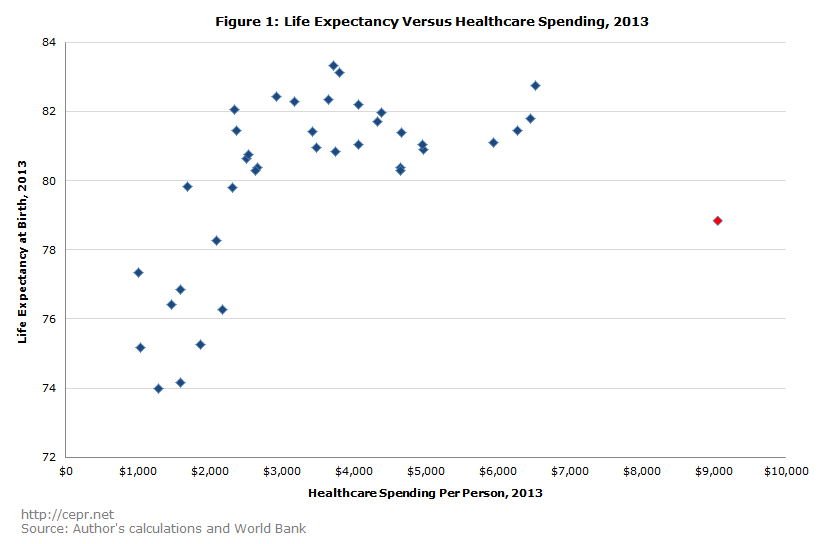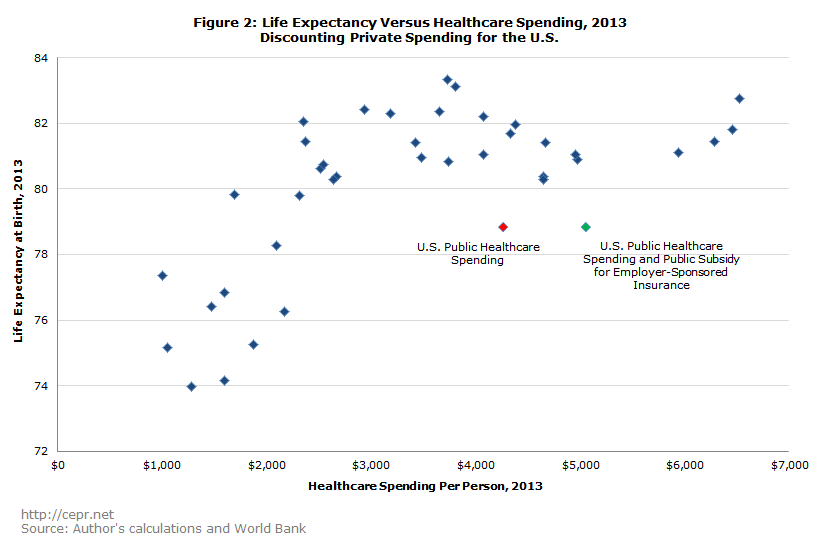October 26, 2015
Health researchers have noted an oddity in the relationship between healthcare spending and life expectancy: while greater spending is generally associated with greater life expectancy, average life expectancy in the U.S. isn’t even close to what we’d predict given its level of healthcare spending. As can be seen in Figure 1, which depicts life expectancy and healthcare spending for all OECD countries and countries counted as “advanced economies” by the IMF, the U.S. is a clear outlier when it comes to healthcare spending and life expectancy (the U.S. is highlighted in red):

This trend also holds within other countries in a way that it doesn’t within the U.S.
One way in which the U.S. differs from most of the other countries is that a large share of our spending is private. However, we do still have substantial public sector spending. In fact, if we re-do Figure 1 but only include public spending for the U.S., we move far closer to the trend set by other developed countries, even though we are still somewhat of an outlier:

The story here is that, if the U.S. health care system were as efficient as those in other countries, we would already be paying enough money to provide health insurance for everyone. In other words, we pay enough to get national health insurance, but due to the inefficiency of our health care system, we are not getting it.






